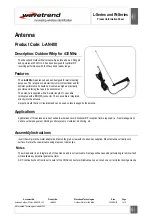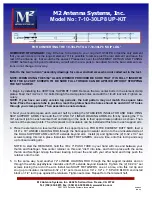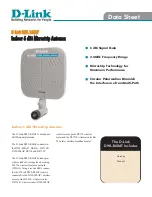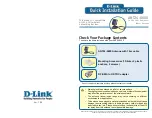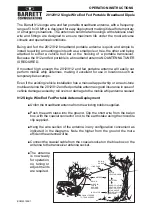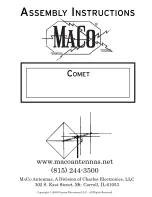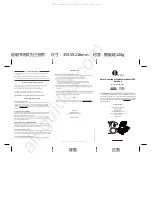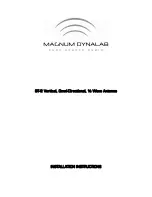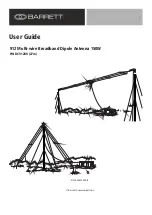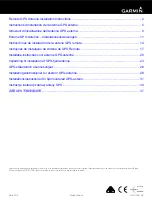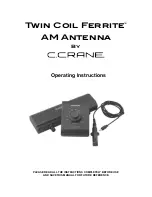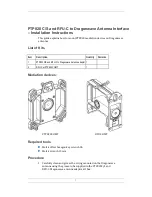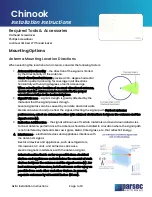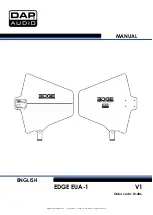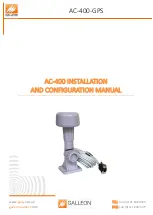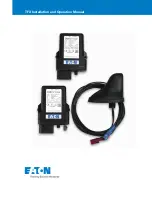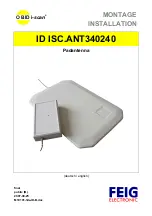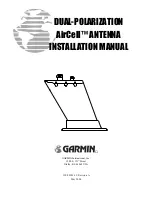
INTRODUCTION
This antenna system, with the equipment supplied, can receive signals simultaneously from satellites located at 101°
and 119° West longitude orbital locations. This antenna system also has a re s e rved position for a satellite located at
110°W for additional services. If such services are off e red in your local area, you will be notified.
The installation pro c e d u res listed in this manual re q u i re basic knowledge in construction, assembly and wiring. In ord e r
to safely install this antenna system, you must be able to perform the following skills:
• Use hand tools for assembly.
• Drill and seal holes in mounting surfaces.
• Use a bubble level to plumb the mast.
(Critical alignment - See Figure 2B.)
• Use a compass and inclinometer or protractor to determine clear line of sight to satellite.
• Install and run coaxial cables through the home from the antenna to the receivers.
• Climb ladders or roofs to mount and wire the antenna.
• Know local and NEC grounding codes. (The National Electric Code is published by the National Fire Protection
Association, 1 Battery m a rch Park, Quincy, Massachusetts, 02269-9959 and may be available at your local public library. )
If you feel this installation is beyond your experience and skill level, then contact the store where the system was pur-
chased for advice on professional installation services in your area.
WARNINGS
Local building and electrical codes (see latest revision of National Electrical Code) require proper
grounding of the antenna mount and coaxial cables. Improper installations may seriously damage
the equipment or the building and cause injury or death to you. Contact a licensed inspector or
electrician in your area for assistance.
WATCH OUT for power lines which may be overhead, buried underground and/or hidden behind
walls. Take extreme care to avoid contact with any power lines with ladders, satellite system part s
or tools during the installation to avoid serious injury or death.
TOOLS REQUIRED
• #1 Phillips Screwdriver
• 5/16 Hex Socket or Spintite
• 7/16 Hex Wrench open or combination end
• Electric Drill & bits
• Bubble Level
• Compass With Degree Scale
• Inclinometer or Protractor
-1-
Installation Manual
for
DIRECTV PLUS
™
Satellite Dish Antenna
or
DIRECTV PARA TODOS
™
Satellite Dish Antenna
Summary of Contents for TADA2420 - ANTENNA SYSTEM
Page 3: ... 3 HARDWARE SORTER continued ...
Page 20: ...NOTES 20 ...

















